Violent City (1974)
Directed by: Hideo Gosha
Written by: Hideo Gosha, Masahiro Kakefuda, Nobuaki Nakajima
Starring: Akira Kobayashi, Bunta Sugawara, Isao Natsuyagi, Noboru Andô
AKA BORYOKU GAI
JAPAN
AVAILABLE ON BLU-RAY: 2OTH FEBRUARY: from EUREKA ENTERTAINMENT
RUNNING TIME: 96 mins
REVIEWED BY: Dr Lenera
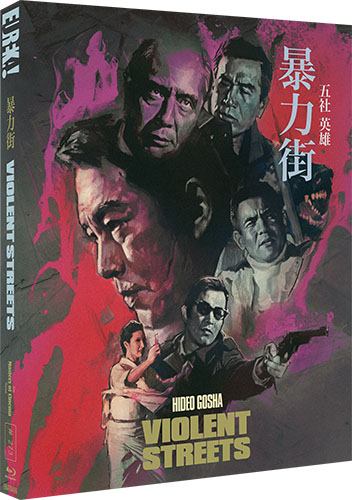
The Togiku clan’s Egawa was sent to prison for his actions during a gang war. Because he named no names, he was awarded a Spanish-themes nightclub called The Madrid in the Ginza strip in Tokyo upon his release eight years later. The Togiku are now a legitimate business and want the place back, while Egawa is still tormented by the fact that his ex-girlfriend Yuko is now with Togiku soldier Yazaki who was once his best friend, When Minami, a singer who’s being promoted by the Togiku, is seemingly kidnapped by the Osaka clan who’ve decided to expand to Tokyo and have Egawa’s nightclub in the process, trouble brews between the two clans, but were the Osaka really responsible?….
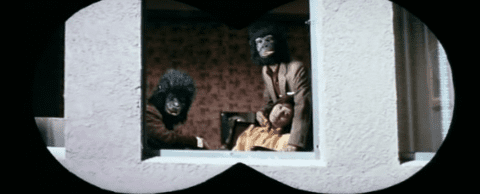
I don’t recall specifically requesting Violent Streets to review, but as it turned out I was glad that it arrived when it did. The Japanese genre of yakuza films is not one I’m very familiar with. In fact, ignoring films of other kinds in which the Japanese Mafia played a major part, for a couple of decades all I really had to reference was the American-Japanese production The Yakuza. That is, it’s true to say, a film of some excellence in what is director Sydney Pollack’s finest hour and the best thing that Robert Mitchum did since Night Of The Hunter, but that was it until just over a year and a half ago when I bought Arrow Video’s boxset of Kinj Fukasaku’s Battles Without Honour And Humanity with some birthday money, though, due to always having loads of discs to view, I honestly didn’t get to begin that series until last week. And what an interesting and exciting film the first offering was, especially fascinating to me being the rituals and the codes of honour that these Japanese made men possessed. So Violent Streets turning up was well timed, I being very enthsiastic about seeing it, though I still have little relevant knowledge so in this review I won’t be able to do much in the way of context and comparing, even if I’m getting an idea of what some of the quirks and conventions of these films are. One thing I can definitely say though; it’s quite a rich ride despite containing almost non-stop brutality with a bit of boobs along the way, the plot constructed by screenwriters Masahiro Kakefuda, Nobuaki Nakajima and director Hideo Gosha perfectly designed to showcase most of those old gangster movie tropes which tells us that, actually, things aren’t really much different anywhere. The crook who’s now straight but just won’t be allowed to stay that way, the kidnapping that goes awry, rival gangs the ex who’s now with the new boss, etc – we’ve seen it all before, but Gosha freshens it all up so that we’re totally involved and really want to know what happens next.
Well we open with a disclaimer telling us that none of what we see is real, which of course alerts us to the possible fact that it might be. The first shot, a closeup of a dog barking in a cage, ends up being nicely mirrored in the final shot [a description of which doesn’t give too much away] of several dogs in the same cage which now has money notes flying around. Now we cut to The Madrid, and a three-piece Spanish act featuring a guitarist, a flamenco dancer and a clapper, and I hope you like what you hear and see, because there’s a lot of them for a while, though unlike in most Hong Kong movies it’s plausible that the music we hear comes from what we see. Our hero is sat at a table alone, and an underling comes to warn him about three visitors. They hassle a waitress who accidentally spills drink on the jacket of one. Egawa coolly acts humble, then cheekily but calmly puts the money notes it looks like he’s about to five to them on a receipt spike, then suddenly stabs the spike into a forehead, smashes a face in with a telephone and lets the other man flee with the words, “Thank you, come again soon”. What a great club owner this guy is, going above the call of duty to stick up for his staff. Mind you, aren’t the men from his old gang who won’t leave him alone because they want the club, even though they initially gave it to him as a thank you present, so maybe such violence ought to be expected, even though everyone has supposedly gone legal? Turning up next is his old friend Yazaki, who tries to talk him into relinquishing the place because the Osaka clan [or rather The Westerm Japan Alliance Of Osaka] are threatening, but with no luck. The Toguki boss Gabera says to Yazaki when he returns that the bullies making trouble are not Yazaki men, “There are legal ways to kick him out”.
Meanwhile singer Minami is kidnapped and Gabera thinks that Star Productions, a rival TV organisation with possible links to the Osaka, took her, The culprits demand one hundred million yen, after which it’s revealed that, actually, they’re Toguki men trying to start a war because – well, we do find out later, but their reason is rather daft. Indeed the merging of what initially seem like two different subplots isn’t done very smoothly, but Egawa is very compelling, almost reminiscent of Rick Blaine in Casablanca, sitting there drinking sadly as he thinks of his old love who left him, while surrounded by all sorts of trouble and pressure yet trying not to get too involved. I seem to recall that Rick had a drunk girlfriend at the beginning who he wasn’t too bothered with, though you didn’t see him drag her round the back, push her against the wall twice, then shove her onto a bed and give her cunnilungus. Egawa’s bit of stuff has a brother who’s involved with the yakuza at a low level and she wants Egawa to help, but of course he’s hesitant. Noboru Ando is truly excellent they way he shows his character’s deep internal conflicts with subtlety yet you still understand what’s going through his mind. An exchange of money for Minami is arranged and the scene in which this happens is very good – on paper nothing exciting really takes place until the end and that’s somewhere else, but the setting of high building scaffolding means that we’re revited as the guy charged with delivering the money has to make his way higher and higher and then the briefcase has to be lowered to the ground on a rope. Yazaki is insistent on more action being taken and reprisals hot up in an orgy of beating, shooting and a hell of a lot of bottles being smashed on heads – one poor guy gets several of them. All this is just about enough to atone for things like Egawa encountering his old paramour who’s married to the man who was his best friend – not always progressing logically. Here, one of Yazaki’s actions seems both illogical and out of character.
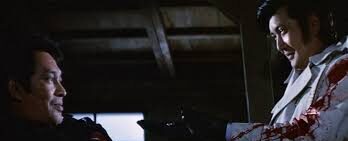
But something vicious is taking place every few minutes, and presented with some considerable visual style by Gosha and his cinematographer Yoshikazu Yamazawa. Battles Without Honour And Humanity has a very rough style with the camera usually being hand held and there being little attempt to disguise this, something that seems to be quite common in Japanese exploitation cinema of the time, but Violent Streets is more smooth in its filming style aside from occasional jarring moments like an early stock shot juddering, something they probably wouldn’t have been able to correct unless there had been more time. But the widescreen frame is often utilised to great advantage, one of the best examples being a shot where Minami is tied up on the extreme far left hand side of the screen, a gangster is watching her from the extreme right hand side of the screen, and bang in the middle of a huge amount of space between the two is a small table with two horror masks [which will soon be used] on it. Without giving away too much [I hope], a shot near the end where the camera pans along a row of silhouettes who are firing across a section of a chicken coup leaves a lasting impression, while a bloody beating with a steel bar seen through a very rainy window is another great shot which has some genuine purpose in slightly softening the brutality, though there’s little attempt to do this elsewhere; not all of the violence may be shown in detail, but that’s probably just because there wasn’t the money to do so. Said chicken coup provides a well used setting for some of the violence and action; a load of clothing dummies seemingly dumped in a field does the same for more, especially a great shot of a killed person falling down into puddles along with the dummy he was carrying, both covered in blood. Some gunplay utilises slow motion well, while a couple of fights are decent even though the usual Japanese way of not using stunt people [outside of martial arts movies] looks like it’s still being employed.
Alongside all this are a sex scene intercut with a woman flamenco dancing faster and faster, a lesbian live show with sitar music playing, and a rape attempt by a guy who’s suddenly put on a gorilla mask seemingly just to carry out this act. There’s much crudity, but also a real attempt to bring some style to the exploitation elements required by the producers. The perpetuators of some of the most memorable acts of nastiness are a unique duo of assassins, one a man who wears a black hat and sometimes has a pigeon on his shoulder, the other a transgender person who says, “I have to kill to keep calm” and is so lethal with razorblades that she usually uses two, something which is most helpful when you’re slitting someone’s throat and going from right to left doesn’t quite do the job so you have to go left to right too. Despite not being in the film that often, they do threaten to steal the show from the main characters, not so much Egawa who’s genuinely interesting throughout even if a few [though not all] of his character beats can be predicted. His girlfiend has some real tragedy about her, constantly heavily drinking to cope with the fact that the man she so loves and admires doesn’t return her feelings and is always really pining for somebody else, and Akira Kobayashi shares good chemistry with Ando so that we can feel the past closeness of their characters. The most familiar member of the cast to westerners is probably Tetsuro Tamba [You Only Live Twice, The 7th Dawn as Shimamura Kansai, the Osaka head. The character’s final scene seems to suggest an obvious political message of the high ups not giving a damn about those beneath them who do the real work for them to reap the rewards, while the whole thing is of course about things like honour, duty, a criminal past never being something you can escape from, and the need to adapt to a fast changing world which can leave you behind. Universal themes really.
Indeed Violent Streets, lacking most of the strange ritualism that was a major feature of Battles Without Honour And Humanity [certainly the first film anyway], is a film that really travels well and should easily by enjoyed by Westerners even if they’re even less experienced in the genre than me. This pulsating, blood-drenched-yet-with-some-depth hour and a half might make you a fan.
Rating: 









SPECIAL FEATURES
Limited Edition slipcase featuring new artwork by Tony Stella [2000 copies]
1080p presentation on Blu-ray from a 2K restoration of the original film elements
Violent Streets has been very well restored indeed, with even grain, the many colours rich, blacks exhibiting no crush and plenty of detail. There are a couple of instances when a small white line is present on the screen; it’s the sort of defect in the original source material that would be impossible to remove without significantly altering the picture. There’s minor distortion on a few sounds, but I’ve noticed this in other Japanese films of this time, it’s very odd but again not something we can blame Toei or Eureka.
Optional English subtitles
An introduction to Violent Streets and the works of director Hideo Gosha by film critic Tony Rayns [36 mins]
I’ve read some criticising of Rayns on movie forums, but I like his leisurely, meandering manner which doesn’t even seem to make use of notes, with Rayns just looking like he’s remembering stuff on camera. He discusses the origin and history of Toei, a studio which is less familiar to many of us than Toho or Daiei; it emphasised samurai films until the genre became less popular and easily switched to yakuza. He also looks at the career of Gosha, comments that it not bearing the revolutionary style of Battles Without Honour And Humanity was probably the reason it disappointed at the box office, and tells us that Ando had been a real life yakuza boss who’s been in prison! He considers it a decent if unremarkable effort; not liking it quite as much as I do.
Jasper Sharp on Violent Streets [13 mins]
This covers similar ground but doesn’t repeat that much actual information. While Sharp provides much the same information about Ando, he also discusses other cast members, such as Kobayashi having been a matinee idol, and tells us that the actors playing the two assassin, Hideo Murota and Madame Joy, reprised their roles in Sister Streetfighter 2. This featurette is rather too short to make much of an impression.
A collector’s booklet featuring a new essay by Japanese cinema expert Tom Mes
“Violent City” is extremely accessible and has nary a dull moment. Eureka’s Blu-ray is hardly packed but the movie certainly deserves much more attention than it seems to have previously had. Highly Recommended!



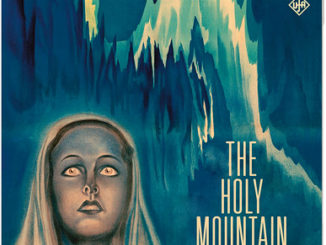
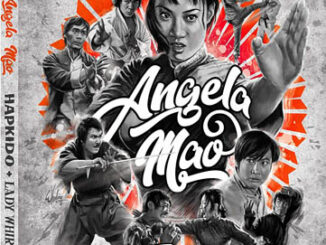
Be the first to comment